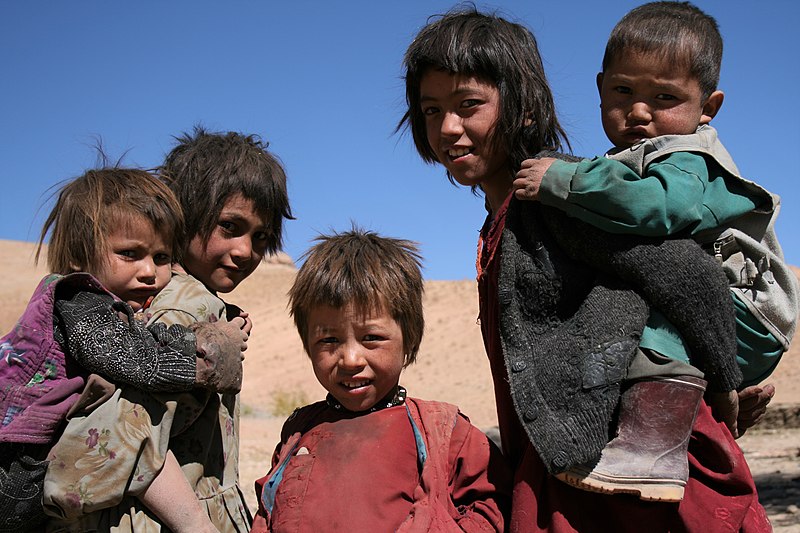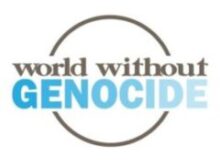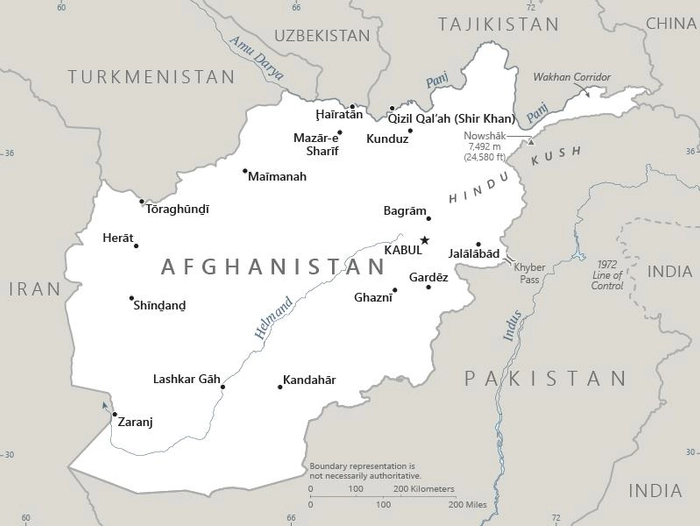Afghanistan
Where
Afghanistan, a South Asian country, borders Tajikistan, Pakistan, Turkmenistan, Uzbekistan, Iran, and China. Up to 85% of Afghanistan’s population are Sunni Muslims.[1] There has been longstanding tension between the Sunnis and the Shia minority.[2]
The Hazaras are a Shia ethnic minority in Afghanistan, and they have faced discrimination for centuries.[3] Before the 19th century, Hazaras made up 67% of Afghanistan’s population. After decades of state-sponsored persecution, they now represent about 9%.[4]
The Taliban in Afghanistan practices a radical version of Sunni Islam. Taliban members adhere to an ideology that denies women’s rights and the rights of intellectuals, activists, political dissidents, and Shia Muslims.[5] They target the Hazaras due to their ethnicity, religious practice, and perceived progressive culture.[6]
When
The Taliban was founded in the early 1990s and was backed by the CIA to fight Soviet occupation. The organization became popular based on promises to impose stability and law after years of conflict. It controlled most of Afghanistan from 1996 to 2001, and it was backed financially by Pakistan.[7]
On September 11, 2001, Al-Qaeda perpetrated the 9/11 attacks on the United States. Al Qaeda leader Osama bin Laden was presumed to be in Afghanistan. President George Bush authorized force against those responsible for 9/11, which led to the U.S. invasion of Afghanistan to search for Bin Laden – who was found in Pakistan and killed. The U.S. invasion of Afghanistan dislodged the Taliban from power and helped to install a civilian government in Afghanistan.[8]
For the next two decades, the US tried unsuccessfully to quell Taliban resistance. Over 47,000 civilians, 6,000 U.S. troops, 1,100 NATO troops, 73,000 Afghan troops, and tens of thousands of Taliban fighters were killed in the subsequent war.[9] The Taliban persevered because of massive revenue streams from poppy cultivation, heroin trafficking, extortion, the mining of minerals and precious stones, and foreign funding from China. The Taliban earns from $300 million to $1.6 billion annually, money used largely for weapons and military support.[10]
Taliban attacks on civilians increased significantly in 2020. Nevertheless, the Trump administration signed a preliminary peace deal with the Taliban, and President Biden then withdrew all U.S. troops in early 2020.[11]
How
The Hazaras have long faced state-sanctioned persecution in Afghanistan. They have been subjected to ethnic cleansing, slavery, land grabs, looting, and the pillaging of homes. Since the inception of the Taliban, the Hazaras have faced an acute threat of annihilation.[12]

Hazara Children in central Afghanistan. Image courtesy of Nasim Fekrat is unmodified and licensed under CC BY-SA 4.0.
The most marked event in the Taliban’s persecution of Hazaras was the massacre in Mazar-i-Sharif on August 8, 1998. The Taliban captured the city, which had a large Hazara population. Invading troops did not discriminate between armed forces and innocent civilians and killed up to 20,000 people. Over the next few days, Taliban fighters systematically persecuted ethnic minorities in the city, with Hazaras targeted most intensely. They were raped, sold into slavery, forcibly converted to Sunni Islam, or slaughtered.[13]
Taliban terrorists have killed thousands of Hazaras in attacks over past decades at schools, weddings, mosques, and hospitals across the country.[14] In 2016, 85 unarmed civilians were slaughtered at a peaceful Hazara protest.[15] In 2017, 41 civilians died in the bombing of a Hazara neighborhood in Kabul.[16] In 2021, 90 students were killed in an attack on a Hazara girls’ school.[17]
Hazaras have also been persecuted by other groups. The Islamic State’s affiliate in Afghanistan has declared war on Shia Muslims since 2014.[18] The Afghan civilian government of 2001-2021 failed to protect Hazaras from terrorist attacks, determining that Hazara lives are expendable and not worth the cost of security efforts. Government-linked warlords perpetrated some of the attacks.[19]
With the Taliban now firmly in power, intellectuals and activists are persecuted. Women face a life without education, employment, or autonomy. Hazaras are at risk of annihilation. Thousands of civilians are desperate to flee the country, yet many states have closed their doors to the refugees. Civilians are in grave danger and require immediate humanitarian aid.
Today
Since the Taliban takeover in August 2021, the country has undergone significant changes, causing Afghans to be concerned about the stability of government, human rights, economic conditions, and security.
The Taliban has made noticeable restrictions on women’s and girl’s rights. These restrictions have been the most obvious degradation since 2021, with dozens of gender-based decrees imposed in the short time frame. These decrees include restrictions on working, including a ban on females employed with the United Nations or international NGOs in Afghanistan, and education limitations for Afghani women and restrictions on their presence in public locations such as parks or gyms.[20] Arbitrary arrests and extrajudicial killings have become more common for women suspected of violating these restrictions.[21] In summer 2024, women were banned from speaking in public. [29]
Economic collapse followed the Taliban’s return to power. The country’s economic conditions worsened when Western donors restricted over 75% of developmental aid that was previously funding government expenditures. The immediate reduction of international aid resulted in a decrease in consumption of public services. Afghanistan was restricted from accessing international banking systems and offshore foreign exchange reserves. The GDP declined by 20.7% in the first year first year of since the Taliban took control and 6.2% in the following year.[22]
Even in its limited capacity, foreign aid continues to prop up the country, with the United States as the largest donor. Since withdrawing in 2021, the US has spent almost $21 billion in humanitarian and developmental aid in Afghanistan.[23] The two next largest donors are the United Kingdom and Germany, whose economic support has dwindled since the Taliban regained control of the country.[24] It is expected that 23.7 million Afghans require food and medical aid today. By the end of 2023, 4.2 million people had been displaced due to conflict and 1.5 million have been displaced due to disaster.[25]
Political and media freedoms for Afghanis are limited. The Taliban outlawed political parties, created a “one-party” state, and discouraged former politicians from impacting politics. This limitation resulted in many politicians, journalists, academics, analysts, and reporters fleeing the country over safety concerns. Some dissidents and reporters who ignore the rule have reported being arrested and tortured.[26]
Despite Taliban control, security concerns over the Islamic State Khorasan Province worsen. This sector of ISIS, also referred to as ISIS-K, has launched many attacks in the region, targeting Shiite minorities, government officials, and public spaces. The Taliban claimed to have resolved this security concern, but violence continues unabated. This has inflamed border tensions with Pakistan and Iran over concerns of decreased regional stability.[27]
Most countries refuse to recognize the Taliban as a legitimate government. Western nations sanction Afghanistan and conduct asset freezes and banking restrictions due to the Taliban’s restrictions on women and girls. Despite this, Western nations continue to provide aid to Afghanistan.
Some regional countries recognize the Taliban, including India, Turkey, and Tajikistan.[28]
As the humanitarian crisis worsens and aid decreases, Afghanistan remains a precarious state with rampant human rights abuses.
In January 2025, ICC Chief Prosecutor Karim A.A. Khan filed applications for arrest warrants to be issued for Haibatullah Akhundzada, the Supreme Leader of the Taliban, and Abdul Hakim Haqqany, the Chief Justice of the “Islamic Emirate of Afghanistan” for alleged “crime[s] against humanity of persecution on gender grounds.”[29] Alleged crimes include imprisonment, enforced disappearance, sexual violence, rape, murder, and other inhumane acts targeted at Afghan women and girls and those perceived to be allies of Afghan females.[30] Prosecutor Khan in his statement continued, “This ongoing persecution entails numerous severe deprivations of victims’ fundamental rights, contrary to international law, including the right to physical integrity and autonomy, to free movement and free expression, to education, to private and family life, and to free assembly.” [31]
Updated by Evelyn Middleton, January 2025.
References
[1] U.S. Department of State. (n.d.). 2022 Report on International Religious Freedom: Afghanistan. U.S. Department of State. https://www.state.gov/reports/2022-report-on-international-religious-freedom/afghanistan/
[2] Council on Foreign Relations. (2023, April 23). The Sunni-Shia Divide. Council on Foreign Relations. https://www.cfr.org/article/sunni-shia-divide
[3] Minority Rights Group. (n.d.) Hazaras in Afghanistan. Minority Rights Group. https://minorityrights.org/communities/hazaras/
[4] UNHCR. (2008). World Directory of Minorities and Indigenous Peoples – Afghanistan : Hazaras. UNHCR. https://www.refworld.org/reference/countryrep/mrgi/2008/en/107199
[5] Maizland, L. (2023, January 19). The Taliban in Afghanistan. Council on Foreign Relations. https://www.cfr.org/backgrounder/taliban-afghanistan
[6] Abbasi, F. (2024, May 3). Attacks Target Afghanistan’s Hazaras. Human Rights Watch. https://www.hrw.org/news/2024/05/03/attacks-target-afghanistans-hazaras
[7] Maizland, L. (2023, January 19). The Taliban in Afghanistan. Council on Foreign Relations. https://www.cfr.org/backgrounder/taliban-afghanistan
[8] Bergen, P. (2024, November 19). September 11 attacks. Britannica. https://www.britannica.com/event/September-11-attacks
[9] Bateman, K. (2022, November 3). In Afghanistan, Was a Loss Better than Peace? United States Institute of Peace. https://www.usip.org/publications/2022/11/afghanistan-was-loss-better-peace
[10] Maizland, L. (2023, January 19). The Taliban in Afghanistan. Council on Foreign Relations. https://www.cfr.org/backgrounder/taliban-afghanistan
[11] North Atlantic Treaty Organization (2022, August 31). NATO and Afghanistan. North Atlantic Treaty Organization. https://www.nato.int/cps/en/natohq/topics_8189.htm
[12] Hazara Research Collective. (2020, September 6). International Relations and Defence Committee: The UK and Afghanistan, Call for Evidence, Written evidence (AFG0008). Hazara Research Collective. https://www.google.com/url?sa=t&source=web&rct=j&opi=89978449&url=https://committees.parliament.uk/writtenevidence/11165/pdf
[13] Hazara Research Collective. (2020, September 6). International Relations and Defence Committee: The UK and Afghanistan, Call for Evidence, Written evidence (AFG0008). Hazara Research Collective. https://www.google.com/url?sa=t&source=web&rct=j&opi=89978449&url=https://committees.parliament.uk/writtenevidence/11165/pdf
[14] Gannon, K. (2021, June 11). Afghan Hazaras being killed at school, play, even at birth. Associated Press. https://apnews.com/article/islamic-state-group-shootings-05612533bbcbfa2d836d46d84b82ee92
[15] United Nations Assistance Mission in Afghanistan. (2016, October). Special Report, Attack on a Peaceful Demonstration in Kabul, 23 July 2016. United Nations Assistance Mission in Afghanistan. https://unama.unmissions.org/sites/default/files/23_july_suicide_attack_against_peaceful_demonstration_-_18_oct_2016.pdf
[16] BBC. (2017, December 28). Afghanistan suicide bomb attack: Dozens killed in Kabul. BBC. https://www.bbc.com/news/world-asia-42500769
[17] Nossiter, A. (2021, May 9). ‘Why Do We Deserve to Die?’ Kabul’s Hazaras Bury Their Daughters. The New York Times. https://www.nytimes.com/2021/05/09/world/europe/afghanistan-school-attack-hazaras.html
[18] Constable, P. (2021, June 6). Afghan Hazaras fear Taliban gains. Washington Post. https://www.genocidewatch.com/single-post/scarred-by-may-school-bombing-afghanistan-s-hazaras-fear-what-awaits-them-as-taliban-gains-ground
[19] Paiman, N. (2020, October 20). The Hazara Genocide and Systemic Discrimination in Afghanistan. The Leadership Conference on Civil and Human Rights. https://civilrights.org/blog/the-hazara-genocide-and-systemic-discrimination-in-afghanistan/#
[20] Smith, G. (2024 August). Afghanistan Three Years after the Taliban Takeover. International Crisis Group https://www.crisisgroup.org/asia/south-asia/afghanistan/afghanistan-three-years-after-taliban-takeover
[21] Amnesty International. (2023). Human Rights in Afghanistan. Amnesty International https://www.amnesty.org/en/location/asia-and-the-pacific/south-asia/afghanistan/report-afghanistan/
[22] World Bank. (2024, April 18). The World Bank in Afghanistan. World Bank Group. https://www.worldbank.org/en/country/afghanistan/overview
[23] Foreign Assistance (2024, September 26). U.S. Foreign Assistance by Country. Foreign Assistance https://foreignassistance.gov/cd/Afghanistan/2023/obligations/0
[24] “Afghanistan.” IDMC – Internal Displacement Monitoring Centre, www.internal-displacement.org/countries/afghanistan/#:~:text=At%20the%20end%20of%202023,recurring%20disasters%20and%20climate%20shocks
[25] Smith, G. (2024 August). Afghanistan Three Years after the Taliban Takeover. International Crisis Group https://www.crisisgroup.org/asia/south-asia/afghanistan/afghanistan-three-years-after-taliban-takeover
[26] Follorou, J.(2024, August 28). US Aid Is Still Vital to Afghanistan. Le Monde https://www.lemonde.fr/en/international/article/2024/08/28/us-aid-is-still-vital-to-afghanistan_6722732_4.html
[27] Council on Foreign Relations. (2024, July). Instability in Afghanistan \ Global Conflict Tracker. Center for Preventive Action https://www.cfr.org/global-conflict-tracker/conflict/war-afghanistan
[28] Siddique, A. (2024, May 30). Which Countries Have Relations with the Taliban’s Unrecognized Government. RadioFreeEurope/RadioLiberty,RFE/RL www.rferl.org/a/afghanistan-taliban-russia-diplomacy/32972530.html
[29] Kelly, A and Joya, Z. (2024, August 26). ‘Frightening’ Taliban law bans women from speaking in public. The Guardian. https://www.theguardian.com/global-development/article/2024/aug/26/taliban-bar-on-afghan-women-speaking-in-public-un-afghanistan
[29] International Criminal Court. (2025, January 23). Statement of ICC Prosecutor Karim A.A. Khan KC: Applications for arrest warrants in the situation in Afghanistan. International Criminal Court. https://www.icc-cpi.int/news/statement-icc-prosecutor-karim-aa-khan-kc-applications-arrest-warrants-situation-afghanistan
[30] International Criminal Court. (2025, January 23). Statement of ICC Prosecutor Karim A.A. Khan KC: Applications for arrest warrants in the situation in Afghanistan. International Criminal Court. https://www.icc-cpi.int/news/statement-icc-prosecutor-karim-aa-khan-kc-applications-arrest-warrants-situation-afghanistan
[31] International Criminal Court. (2025, January 23). Statement of ICC Prosecutor Karim A.A. Khan KC: Applications for arrest warrants in the situation in Afghanistan. International Criminal Court. https://www.icc-cpi.int/news/statement-icc-prosecutor-karim-aa-khan-kc-applications-arrest-warrants-situation-afghanistan



